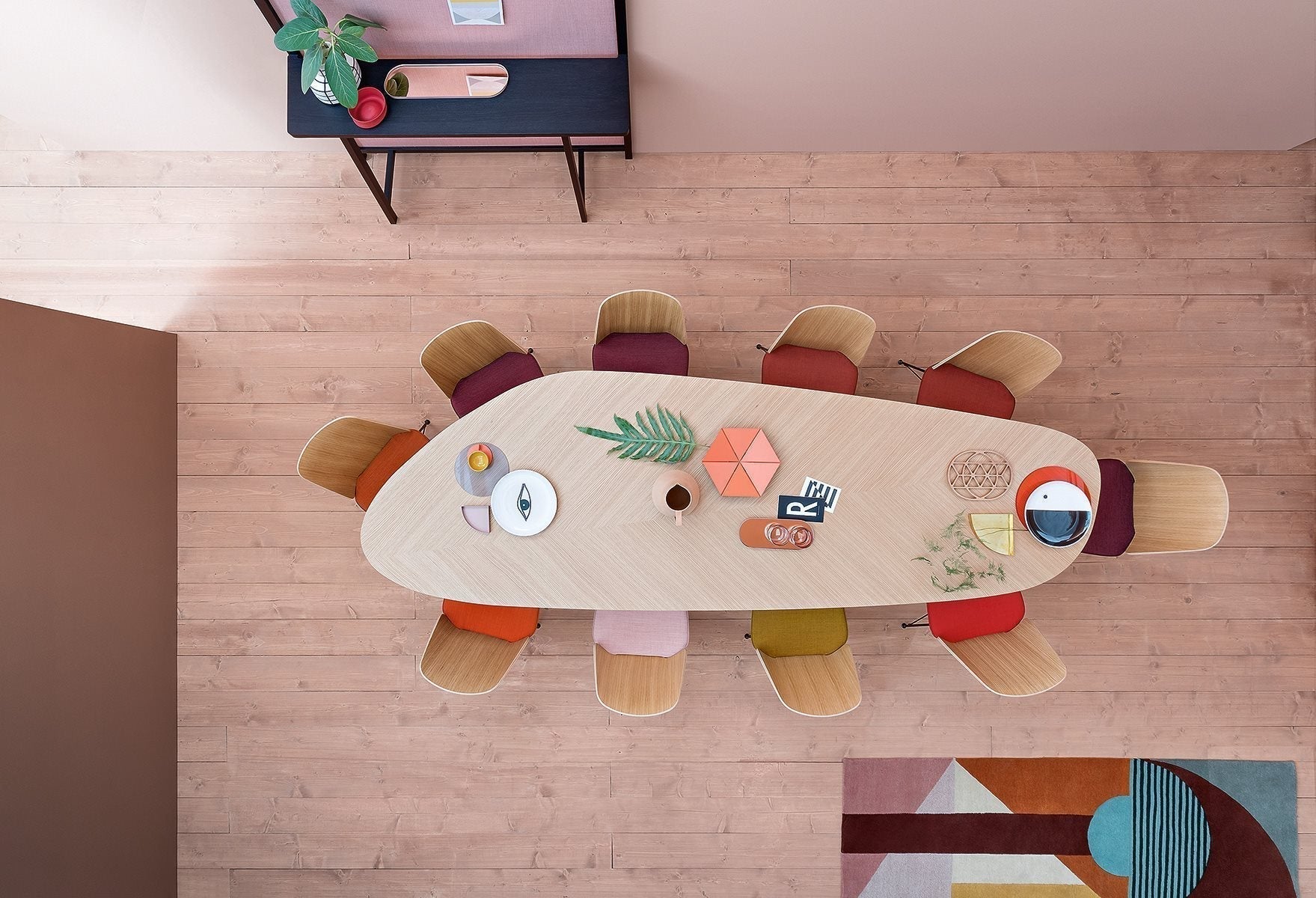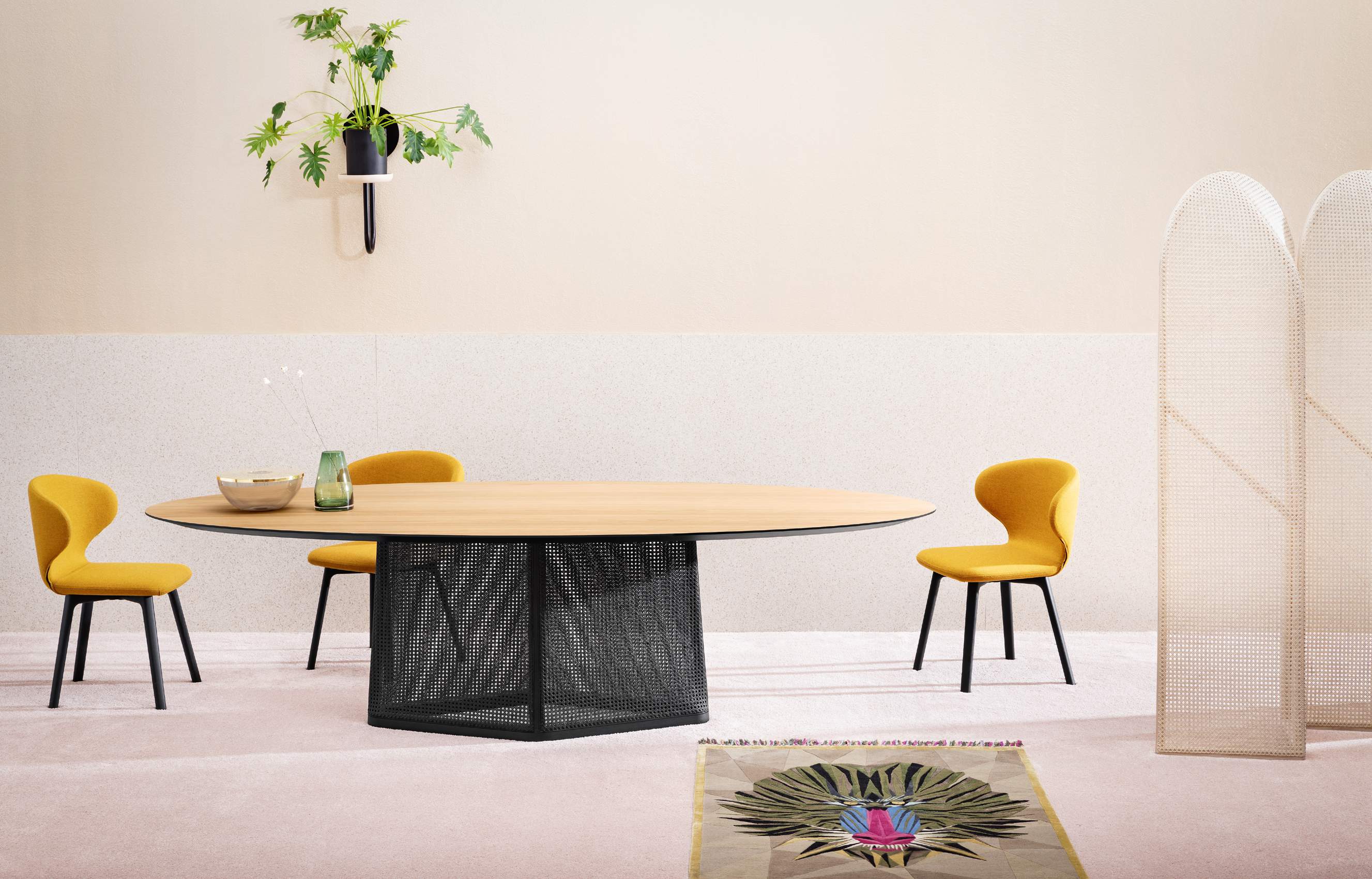
The Million Dollar Question: Why Are Luxury Dining Tables So Expensive?
Unveiling the Value of Luxury Dining Tables
Stepping into the realm of luxury furniture, especially when eyeing the exquisite centerpiece of any dining room—the dining table, often leaves us pondering the justification behind their often astronomical price tags. It's a query that dances on the minds of many, a blend of curiosity and critique, leading us into the heart of luxury design and craftsmanship. As we unfold the layers, the million-dollar question gradually reveals its answers, not just in the price but in the value they bring to our spaces and lives. Let's delve deeper and discover why luxury dining tables, such as the Plisse Table with its elegant marble top, the sophisticated Elica Table, and the robustly designed Gran Sasso Table, command such admiration and hefty investment.
Why Are Luxury Dining Tables So Expensive? The Real Breakdown:
-
Exceptional Materials:
- Sustainably Sourced Wood and Marble: The very essence of a luxury dining table lies in its materials. Imagine the Plisse Table by Midj, its option for a marble top isn't just any marble. We're talking about meticulously sourced, premium quality marble that's not only visually stunning but is also destined to last for generations.
- Metals with a Story: The hardware and accents on luxury tables often come from metals that are not only durable but carry a certain luster and depth that cheaper materials cannot mimic.
-
Skilled Artistry:
- Handcrafted Precision: Behind every curve and joint of a luxury dining table, like the Elica Table by Zanotta with its matt white Cristalplant® base, there's a story of skilled artisans who invest hours of laborious love. Their tools are extensions of their hands, and their techniques are legacies passed down through generations.
- Art Over Assembly: Unlike mass-produced pieces, these tables are birthed from a place of passion and precision, where every millimeter is accounted for, ensuring a uniqueness that mass production simply can't replicate.
-
Design and Innovation:
- Pushing Boundaries: Luxury dining tables are often at the forefront of design innovation. The Gran Sasso Table by Midj, with its Baydur polymer base, exemplifies how materials can be pushed beyond their conventional limits to support either a ceramic or glass top, offering versatility and strength.
- Customization at Its Core: The beauty of luxury lies in the power of choice. Custom sizes, materials, and finishes allow these pieces to become deeply personal to their owners, reflecting individual styles and stories.
-
Brand Legacy and Exclusivity:
- Reputation and Recognition: When you invest in a luxury dining table, you're also buying into a legacy of design excellence and craftsmanship. These are brands that have stood the test of time, their names synonymous with quality and luxury.
- The Exclusivity Factor: Owning a piece from a renowned collection means bringing a slice of art into your home. It's not just furniture; it's a statement, a piece that sparks conversation and admiration.
-
Sustainability and Ethics:
- Eco-Friendly Practices: In a world increasingly aware of its ecological footprint, luxury brands often lead the way in sustainable and ethical practices, from sourcing materials responsibly to ensuring fair labor practices.
- Longevity Equals Less Waste: The longer lifespan of luxury tables means less frequent replacements, contributing to a more sustainable cycle of consumption.
THE PITFALLS OF LOW-COST FURNITURE: WHY CHEAPER ISN’T ALWAYS BETTER
While the allure of saving a buck is strong, the hidden costs of opting for budget-friendly furniture can quickly outweigh the initial savings. Here’s why:
-
Compromised Quality:
- Materials that Fall Short: Cheaper dining tables often utilize materials like particleboard or low-grade veneer, which lack the durability and aesthetic appeal of the superior materials used in luxury tables.
- Wear and Tear: The longevity of these pieces is significantly shorter, meaning what you save now, you may end up spending later on replacements.
-
Lack of Uniqueness and Customization:
- Cookie-Cutter Designs: Mass-produced furniture lacks the uniqueness and personalization that comes with luxury pieces. You're likely to find the same table in numerous homes, lacking any distinctiveness.
-
Short-Term Savings vs. Long-Term Costs:
- The Cycle of Replacement: Low-cost furniture's appealing price tag often comes with the hidden cost of frequent replacements, not to mention the time and effort spent in the cycle of buying new tables every few years. This seemingly economical choice exacerbates a significant environmental issue, as the EPA estimates that in the United States about 10 million lbs. of furniture is wasted yearly. This staggering figure highlights the long-term costs not only to the consumer but also to the environment, as the cycle of replacement contributes to the growing problem of waste and landfill overflow.
-
Environmental and Ethical Concerns:
- Fast Furniture's Toll: The environmental impact of producing and disposing of low-cost furniture is significant, contributing to deforestation and landfill waste, not to mention the often-questionable labor practices involved in their production.
THE CRAFTSMANSHIP DIFFERENCE
The soul of a luxury dining table lies not just in its materials or design but in the very hands that craft it. The difference is palpable, a testament to the art of making rather than merely manufacturing.
- The Human Touch: Artisans imbue a part of their spirit into each table. This human element ensures that no two pieces are identical, offering a uniqueness that's impossible to replicate with machines.
-
A Legacy of Skills: Craftsmanship in luxury furnitur is not just about skill; it's about preserving a heritage. The techniques used by these artisans have been honed over centuries, and passed down through generations to continue a tradition of excellence.

ARTISANS VS. MACHINES: THE IMPACT ON FURNITURE QUALITY
This age-old debate transcends beyond mere preference, touching the core of what we consider valuable and meaningful in our living spaces.
- Artisans' Edge: The advantage of artisan-crafted furniture is not just in its aesthetic appeal but in its structural integrity. Artisans can adjust their techniques in real-time, ensuring each piece is perfectly crafted.
- Machines' Limitation: While machines can produce in bulk, they lack the ability to adapt to the unique characteristics of each material, leading to a homogeneity that diminishes the soul of the piece.
CONCLUSION: THE TRUE VALUE OF INVESTING IN LUXURY DINING TABLES
As we circle back to the million-dollar question, it becomes clear that the value of luxury dining tables extends far beyond their price tags. They are not mere furniture pieces but symbols of heritage, craftsmanship, and sustainable living.
- A Reflection of Personal Values: Choosing a luxury dining table reflects a preference for quality over quantity, a commitment to sustainability, and an appreciation for the artistry of furniture making.
- An Heirloom for Generations: With their unparalleled durability and timeless design, luxury dining tables become more than just part of your dining room—they become a part of your family's story, passed down through generations.
FREQUENTLY ASKED QUESTIONS
In anticipation of the curiosity sparked by our exploration, here are answers to some frequently asked questions about luxury dining tables:
-
Question: Why justify the expense of a luxury dining table?
Answer: Beyond the superior materials and craftsmanship, investing in a luxury dining table is an investment in longevity, sustainability, and art. These pieces offer unparalleled aesthetic and functional value that enhances with time.
- Question: Can luxury dining tables truly be considered better investments?
Answer: Absolutely. Luxury dining tables not only maintain their beauty and functionality over decades but can also become valuable heirlooms, appreciating in both sentimental and monetary value.
- Question: How do luxury dining tables align with sustainable living?
Answer: Many luxury brands prioritize eco-friendly practices, from sourcing materials responsibly to minimizing waste. By investing in a piece that lasts longer, you're also contributing to a cycle of reduced consumption and waste.
- Question: Are there affordable options within the luxury segment?
Answer: While 'affordable' is subjective, many luxury brands offer a range of options that, while still an investment, are accessible to a broader audience. The true cost of luxury becomes more apparent when considering the longevity and timeless design of these pieces.
Conclusion
In wrapping up our deep dive into the world of luxury dining tables, it's clear that these pieces are more than just a place to gather for meals. They are a celebration of craftsmanship, design, and sustainable choices that enrich our homes and lives with beauty and purpose. Each luxury dining table carries with it a story of excellence, making it a worthy centerpiece of any home.



